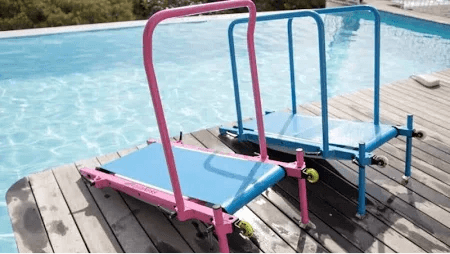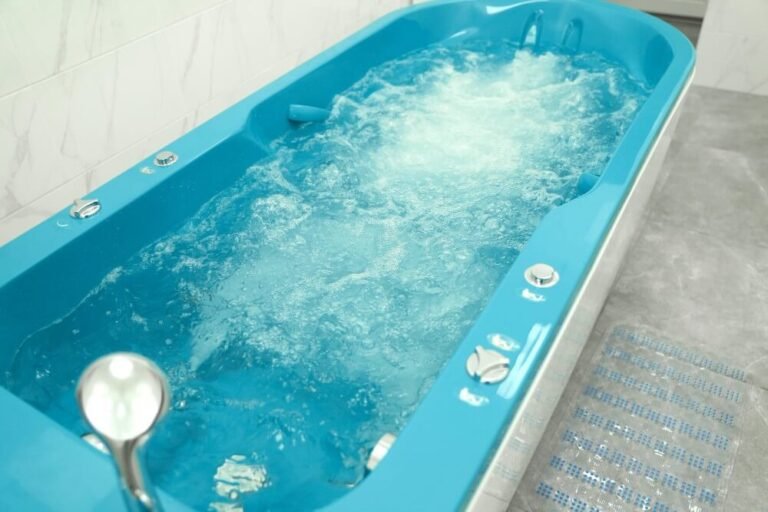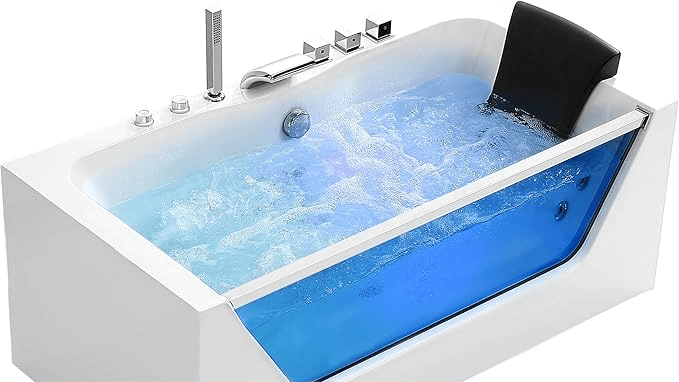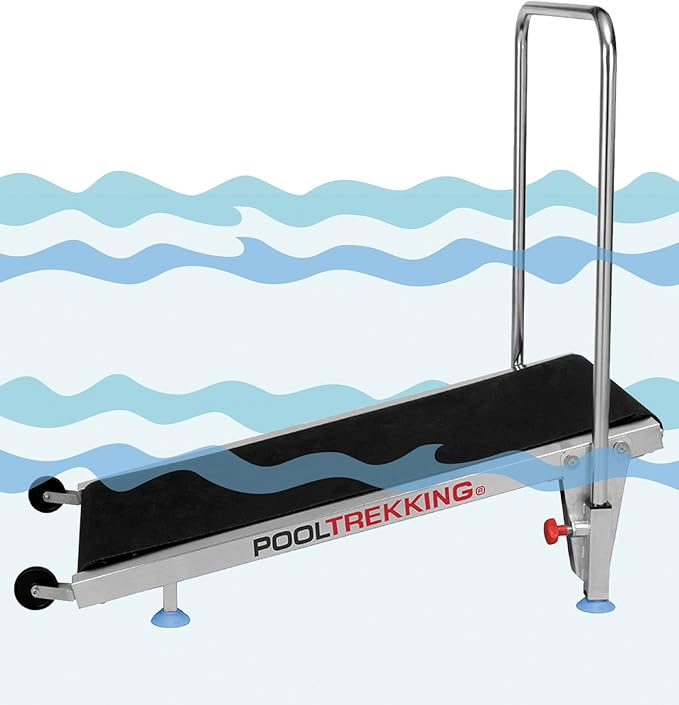A Beginner’s Guide to Underwater Treadmills and Their Benefits
Underwater treadmills are revolutionizing the approach to exercise by offering a distinct combination of water therapy and cardiovascular training. This innovative fitness equipment creates a supportive environment that significantly reduces the impact on the joints while maximizing the benefits of the workout.
Whether an athlete is seeking to enhance performance or an individual recovering from an injury, an underwater treadmill can serve as a transformative tool.
Understanding the mechanics of these machines, the advantages they offer, and the essential tips for initiating one’s fitness journey can improve overall well-being.
What Is an Underwater Treadmill?
An underwater treadmill is a specialized piece of fitness equipment meticulously designed for aquatic exercise. It offers a distinctive workout experience that integrates the advantages of traditional treadmill training with the therapeutic properties of water.
This innovative fitness technology employs water resistance to facilitate a low-impact workout, aiding individuals in enhancing their cardiovascular fitness, muscle strength, and overall physical well-being.
By utilizing the principles of buoyancy, users can pursue their fitness objectives while significantly reducing the risk of injury, rendering it an ideal option for rehabilitation programs and fitness regimens for seniors.
Additionally, underwater treadmills can be seamlessly incorporated into various aquatic fitness and hydrotherapy routines, augmenting recovery and promoting improved joint health.
How Does an Underwater Treadmill Work?
An underwater treadmill utilizes a combination of water resistance and buoyancy to create an effective low-impact exercise environment, making it suitable for a wide range of fitness levels and rehabilitation needs. The mechanism involves a treadmill belt submerged in water, which allows users to walk or jog while experiencing significantly reduced stress on their joints compared to traditional dry-land workouts.
This specialized fitness equipment typically features adjustable water levels that can be customized to accommodate the user’s height and rehabilitation requirements, thereby providing an optimal training experience. As individuals increase their pace, the speed settings can be modified, allowing for personalized training regimens that effectively enhance cardiovascular strength and endurance.
The buoyancy provided by the water not only alleviates pressure on the limbs but also enables users to perform functional training exercises more effectively. By engaging in underwater workouts, rehabilitation patients can safely regain strength and mobility, making this equipment an excellent choice for individuals recovering from injuries or seeking to enhance their overall fitness.
What Are the Benefits of Using an Underwater Treadmill?
An underwater treadmill presents numerous benefits, establishing it as an effective instrument for improving fitness and facilitating recovery within a safe and supportive environment.
One of the most notable advantages is its capacity to deliver a low-impact workout, which alleviates joint stress and minimizes the risk of injury while permitting effective rehabilitation and muscle conditioning.
Furthermore, the aquatic setting enhances cardiovascular fitness and endurance training, rendering it suitable for various individuals, including athletes and those recovering from injuries.
1. Low-Impact Exercise
One of the most significant advantages of using an underwater treadmill is its capacity to deliver a low-impact workout that markedly reduces stress on the joints. This characteristic makes it an ideal solution for individuals experiencing joint pain or those recovering from injuries.
The buoyancy of water supports the body’s weight, enabling users to participate in aerobic exercises without the harsh impact that typically accompanies conventional running or walking on solid ground.
This feature is particularly important for seniors, who frequently encounter mobility challenges and require a safe method to maintain their fitness levels. Individuals undergoing rehabilitation can significantly benefit from this gentle approach, as it facilitates gradual strength building while minimizing re-injury risk.
Low-impact routines promote joint health, enhance cardiovascular endurance, and contribute to overall well-being, making them appropriate for a diverse range of populations, including those with chronic conditions.
Adopting low-impact exercise supports recovery and encourages a more sustainable approach to physical activity throughout an individual’s life.
2. Increased Resistance
Another significant advantage of underwater treadmills is their increased water resistance, which effectively enhances muscle strength and conditioning during exercise. The natural resistance water provides allows users to engage in resistance training without additional weights, making workouts more efficient and adaptable to individual fitness levels.
This distinctive feature challenges the muscles in ways traditional land-based workouts cannot while reducing the impact on joints. As a result, underwater treadmills are an excellent option for individuals recovering from injuries or those experiencing chronic pain.
By exercising in water, users can perform a variety of movements that promote overall fitness goals, including endurance, agility, and flexibility. Water’s buoyancy supports the body, permitting a greater range of motion and thereby maximizing the benefits of aquatic fitness.
Consequently, individuals who incorporate underwater treadmills into their fitness routines will likely experience enhanced performance and more rapid progress in their strength training endeavors.
3. Improved Cardiovascular Fitness
An underwater treadmill significantly enhances cardiovascular fitness by allowing individuals to perform aerobic exercise within a controlled aquatic environment, thereby improving endurance training. The distinctive combination of water buoyancy and resistance facilitates an increase in heart rate while reducing the strain on the cardiovascular system compared to traditional workouts.
This innovative fitness approach enhances overall health by promoting improved blood circulation and oxygen delivery throughout the body, vital for maintaining heart health. Exercising underwater offers an effective method for building stamina without the harsh impact commonly associated with land-based running or high-impact exercises.
As users adapt their routines, they can progressively increase the intensity, making this option suitable for individuals at all fitness levels.
The resultant improvements in cardiovascular performance aid in achieving athletic objectives and contribute to enhanced metabolic function and weight management, thereby presenting a comprehensive fitness solution that accommodates various personal health needs.
4. Reduced Risk of Injury
An underwater treadmill significantly reduces the risk of injury, making it an excellent option for rehabilitation therapy and recovery programs. The low-impact nature of this workout enables users to enhance joint mobility and engage in physical activity without the concern of aggravating existing injuries or incurring new ones.
This innovative exercise equipment benefits athletes recovering from specific sports-related injuries. It is an ideal alternative for seniors aiming to maintain their fitness levels while minimizing joint stress. The buoyancy provided by the water decreases the weight-bearing load, creating a safer exercise environment where strength can be gradually rebuilt.
Underwater treadmills can be adjusted to accommodate varying fitness levels and rehabilitation needs, ensuring that all users, regardless of their backgrounds, can access an effective workout that promotes healing and enhances overall physical endurance.
Who Can Benefit from Using an Underwater Treadmill?
The underwater treadmill is a highly versatile fitness tool that offers significant benefits to a wide range of individuals, from athletes aiming to enhance their performance to seniors in search of safe exercise alternatives.
Its adaptability renders it suitable for various fitness levels and rehabilitation requirements. It enables individuals experiencing joint pain, recovering from injuries, or initiating their fitness journey to engage in low-impact workouts that foster overall wellness and facilitate recovery.
1. Athletes
Athletes can derive significant advantages from utilizing an underwater treadmill. It offers a distinctive workout environment that enhances sports performance while also serving as an effective tool for rehabilitation during injury recovery. The capacity to engage in high-intensity training without the associated impact makes this equipment ideal for maintaining fitness during recovery periods.
Incorporating this innovative apparatus into their training regimens enables athletes to improve cardiovascular endurance, strength, and flexibility, all while minimizing the stress placed on their joints. The buoyancy provided by water helps to reduce the risk of further injury during rigorous training sessions, allowing athletes to sustain their conditioning without the apprehension of setbacks.
Moreover, the water’s adjustable resistance facilitates personalized workouts that can be tailored to meet specific needs, thereby optimizing performance gains. This integration of rehabilitation and training significantly enhances overall agility and muscle tone, which is essential for excelling in various athletic disciplines.
2. Individuals with Joint Pain or Injuries
Due to their low-impact design, underwater treadmills can greatly benefit individuals experiencing joint pain or recovering from injuries. This feature facilitates gentle movement and rehabilitation without exacerbating pre-existing conditions, making aquatic fitness a viable option for pain management and recovery.
The buoyancy of water significantly alleviates the strain on joints while providing resistance that enhances muscle strength. Many healthcare professionals advocate for including these treadmills as part of a comprehensive rehabilitation program, encouraging patients to increase their range of motion and endurance gradually.
Moreover, the warm water can help relieve stiffness, rendering each session more comfortable and effective. By incorporating interval training on underwater treadmills, users can strategically tailor their workouts to build strength and improve cardiovascular health. This dual approach supports pain management and fosters a sense of well-being that can expedite the recovery process.
3. Seniors
Seniors can derive significant benefits from using underwater treadmills, which effectively maintain fitness and wellness while minimizing the risk of injury. Water’s supportive properties enable older adults to enhance joint mobility, strength, and overall health without the concerns associated with falls or other hazards typically linked to conventional workouts.
The buoyancy of water mitigates the impact on delicate joints, rendering each workout session safe and manageable. This specialized exercise equipment improves cardiovascular fitness and fosters muscle endurance and flexibility, which are essential for aging gracefully.
With easily accessible options, seniors can exercise comfortably, often within specialized facilities that cater to their needs. Thus, underwater treadmills can contribute to a more enjoyable fitness experience, promoting regular engagement in physical activities tailored to their health and well-being.
How to Use an Underwater Treadmill?
Effective use of an underwater treadmill requires a thorough understanding of its setup and the execution of a structured workout routine. This approach maximizes the benefits of the exercise while ensuring safety and maintaining proper form.
Adhering to these guidelines can significantly enhance workout efficiency and contribute to achieving individual fitness objectives, whether they pertain to rehabilitation, weight loss, or overall health improvement.
1. Adjusting the Water Level
Adjusting the water level is essential when utilizing an underwater treadmill, as it directly influences buoyancy and, consequently, the intensity of the workout. A higher water level offers more fantastic support, reducing joint stress, while a lower water level increases the challenge and resistance encountered during exercise.
Achieving the appropriate balance is critical, particularly for individuals with varying fitness levels and objectives. For beginners or those recovering from injuries, maintaining a higher water level can enhance comfort and facilitate gradual progress, allowing them to build strength without the risk of strain. In contrast, advanced users may opt for a lower setting to intensify their training, promoting greater muscle engagement and cardiovascular exertion.
Regularly reassessing the water level enables individuals to tailor their sessions to their evolving capabilities and goals, ultimately leading to more effective workouts and improved overall performance.
2. Setting the Speed and Resistance
Establishing the appropriate speed and resistance on an underwater treadmill is crucial for tailoring workouts to align with specific fitness objectives, whether for rehabilitation, endurance training, or general fitness. Adjusting these parameters enables individuals to regulate the intensity and effectiveness of their exercises.
For those concentrating on rehabilitation, beginning at a lower speed and minimal resistance creates a safer environment for regaining strength and mobility without placing excessive stress on the joints. Conversely, individuals targeting endurance should progressively increase speed and resistance to elevate heart rates and simulate more challenging conditions.
For fitness enthusiasts focused on general health, balancing speed and resistance can significantly enhance cardiovascular health and promote muscular endurance. Experimentation within these parameters facilitates a personalized workout experience, ensuring that each session is practical and contributes towards attaining specified objectives.
3. Proper Form and Technique
Maintaining proper form and technique while using an underwater treadmill is essential for optimizing workout efficiency and preventing injuries. Key elements of form include posture, foot placement, and arm movement, all of which play crucial roles in ensuring effective and safe exercise.
To begin, it is imperative to maintain a straight back and relaxed shoulders, creating a balanced posture that facilitates optimal movement. Foot placement should be secure, with the entire foot making contact with the treadmill surface to ensure even weight distribution, thereby reducing strain on the joints. Additionally, arm movement should be coordinated with leg movements to promote stability; excessive swinging should be avoided, as it can disrupt balance.
Common mistakes include leaning too far forward, leading to back strain, and taking excessively long strides, which may increase the risk of slips and falls. By concentrating on these details, individuals can enhance their workout experience and minimize the likelihood of injuries, ensuring that each session on the underwater treadmill is both productive and safe.
Are There Any Risks or Precautions to Consider?
Although underwater treadmills are typically safe and advantageous, it is essential to acknowledge specific risks and implement precautions to guarantee a favorable experience.
Recognizing individual health conditions and establishing appropriate safety measures are vital for optimizing the effectiveness of underwater workouts while minimizing potential hazards.
1. Water Temperature
An important consideration when utilizing an underwater treadmill is the water temperature, which significantly influences comfort and safety during exercise. Maintaining an optimal water temperature prevents muscle stiffness and ensures a positive workout experience.
The ideal water temperature for most aquatic workouts ranges from 80 to 88 degrees Fahrenheit. This range facilitates muscle relaxation and enhances circulation, enabling more effective movements and improved performance.
If the water temperature is too cold, it may result in discomfort and impede flexibility, while hot water can increase the risk of dehydration and fatigue. Therefore, adjusting the temperature per safety precautions, such as implementing regular hydration breaks and monitoring individual physical responses, is critical for maximizing the benefits of aquatic training and ensuring that workouts remain effective and enjoyable.
2. Potential for Drowning
While the likelihood of drowning during the use of an underwater treadmill is minimal, appropriate safety measures must be implemented to ensure the well-being of all users, particularly those who may not possess strong swimming abilities. Proper supervision and adherence to established safety protocols are essential in mitigating potential risks.
Establishing a structured program that includes trained personnel to monitor activities is critical, especially when participants have existing health issues or lack experience in aquatic environments. These trained supervisors should remain vigilant and be prepared to assist as necessary, equipped with rescue devices and first-aid knowledge.
Users are advised to always wear suitable flotation aids and remain within their comfort zones while gradually building their confidence. Additionally, educating all users about emergency procedures significantly enhances safety, ensuring everyone involved understands the importance of responding promptly in unforeseen circumstances.
3. Health Conditions to Consider
Individuals with specific health conditions should obtain medical advice before utilizing an underwater treadmill to determine the suitability of aquatic exercise for their circumstances. Conditions such as cardiovascular, respiratory, or recent surgeries may necessitate particular considerations and precautions.
It is crucial to comprehend how these health factors can influence one’s capacity to effectively engage in low-impact aquatic workouts. For example, individuals with cardiovascular conditions may require a comprehensive evaluation to monitor exertion levels during exercise, ensuring they remain within safe parameters. Likewise, those recovering from surgery must assess their healing progress and any mobility limitations.
Consultation with healthcare professionals can facilitate the development of an appropriate exercise regimen, taking into account personal health history and recovery objectives. This professional guidance enhances safety, enabling individuals to experience the numerous benefits of underwater treadmill workouts without compromising their well-being.
Frequently Asked Questions
What is an underwater treadmill, and how does it work?
An underwater treadmill is a piece of fitness equipment designed for use in a pool. It features a moving belt like a regular treadmill but is submerged in water. The user can walk or run on the belt while immersed in the water, providing a low-impact workout.
What are the benefits of using an underwater treadmill?
Using an underwater treadmill has many benefits, including low-impact exercise, increased resistance and muscle activation, improved balance and stability, and reduced joint stress and pain.
Who can benefit from using an underwater treadmill?
An underwater treadmill can benefit anyone looking for a low-impact workout. Still, it is especially beneficial for individuals with joint pain or injuries, seniors, and those recovering from surgery or physical therapy.
Can an underwater treadmill be used for weight loss?
Yes, an underwater treadmill can be an excellent tool for weight loss. The resistance of the water and the increased calorie burn from the low-impact workout make it an effective way to burn calories and lose weight.
Do I need special training or equipment to use an underwater treadmill?
No, you do not need any special training to use an underwater treadmill. However, it is essential to consult with a professional before starting any new exercise routine, and a flotation belt or other equipment may be helpful for added support.
Are there any safety precautions to remember when using an underwater treadmill?
Yes, listening to your body and not pushing yourself too hard is essential. Always start slowly and gradually increase the intensity of your workout. Staying hydrated and cautious when entering and exiting the pool is also necessary.






